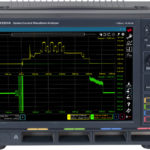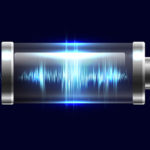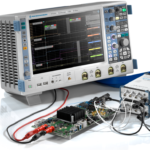The second part of EEWorld’s two-part “virtual roundtable” discussion on power system design considerations for wireless IoT nodes and wearables focuses on the use of switching regulators and the associated technical challenges. Our panelists are: Florian Feckl (FF), Systems Engineer and Product Definer for Low Power Buck Converter, Texas Instruments, and Kyle Van Renterghem, (KVR) Marketing & Applications Manager, Low Input Voltage LDOs, Texas Instruments.
JS: Given the extreme dynamic power range of wireless IoT nodes, when do switching regulators fit into the power system design?

FF: Switching regulators optimize the power conversion efficiency whenever battery and system voltages differ greatly. Modern converters are designed to enable high efficiency over decades of load ranges. An example is the TPS62840 step-down converter, enabling highly efficient conversion from 1 µA to 750 mA load current. Even if the system voltage range allows a direct battery-connect, a down conversion to lower voltage optimizes your power consumption as the system is supplied with an optimized voltage. Switching regulators like TPS62860 are available with dynamic voltage scaling (DVS) to further adjust the optimized voltage according to the mode of operation of the application (standby, active, transmit).
JS: How important is automatic and/or forced bypass functionality in switching converters used in wireless IoT nodes and wearables?
FF: In the past, forced bypass mode operation was very important to minimize quiescent currents in system standby mode. With the availability of ultra-low-IQ converters, highly efficient power conversion can be achieved during normal switching operation, as well. With automatic bypass mode, often called 100% mode, designers can extend the runtime of primary battery-powered systems. This allows them to keep the system active even if the battery is depleting. This feature is now standard in most modern switching converters.
JS: What factor(s) determine when the use of highly integrated power management ICs is most appropriate?
FF: One key factor is the amount of voltage rails needed versus the required flexibility, especially if the system is intended to have several options, like low-/mid-/high-end in wearables. A discrete approach allows the flexible usage of the optimized device. Another important aspect is the physical location of the rails on the board. Using discrete switching regulators allows designers to directly place the converter at the point-of-load to minimize trace and accuracy losses. The flexible placement enables a denser layout of the overall system – think of “Tetris” when doing your layout.

JS: What general advice do you have for designers seeking best-in-class power systems for wireless IoT nodes and wearables?
KVR: Keep in mind that while low IQ is important for the ICs you select, there are other performance specifications which will impact your design (PSRR, transient performance, efficiency, etc.) so pay attention to the tradeoffs you are making when selecting the ICs for your power system.
JS: Thank you to our Virtual Roundtable participants for sharing their experience and insights into power system design considerations for wireless IoT nodes and wearables! You might also be interested in reading the first part of this virtual roundtable that focuses on the use of low dropout regulators (LDOs).







Leave a Reply